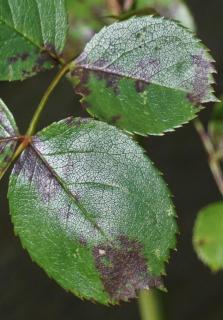

Rose trees are most certainly among the most beautiful flower-bearing shrubs, but they are also among the most vulnerable to diseases.
Although they may be fragile, their diseases can be mastered!
Regular and often organic care helps eradicate or prevent many rose tree parasites and diseases.

Here a few solutions to get rid of aphids naturally on rose trees:
Since ladybugs eat aphid larvae, they naturally contribute to controlling aphid populations. This method is increasingly practiced by professionals who manage parks, and it is 100% organic.
This is an excellent 100% organic way of fighting aphids.
Read here on how to make your own stinging nettle tea.
Made with Marseille soap or beldi soap dissolved in water and sprayed on the plant, this soap mix makes it hard for aphids to stick to leaves.
Grate 5 oz (150 grams) of soap and dissolve it in 1 quart (1 liter) water, add and mix in 1 tablespoon vegetable oil. Spray on plants.
This is the most common fungus to attack rose trees.
It creates orange-rust colored blisters on the underside of leaves that show on the top side with small yellow-red-brown halos.
Effective treatment products are often sold against rose tree diseases and can also be used on all other plants.
Here are all our tips on how to effectively fight rust.
This is one of the major issues that rose trees face, which has distinctive symptoms: yellowing of leaves that follows leaf discoloration.
Rose tree chlorosis is connected to the soil, often too poor, heavy and chalky. This prohibits the shrub from extracting much-needed iron from the soil.
Symptoms are very clear, and treatment is quite easy to apply.
Every winter, mix horse manure into the soil. If the disease is already apparent, there are anti-chlorosis treatments for sale in garden stores that help the rose tree to harvest the iron it needs.
Also called white powder disease, powdery mildew is a fungus that develops a layer of white velvety powder that covers leaves and stems.
It develops particularly fast when weather conditions are hot and humid.
Months that are most favorable to it are April or May, when temperatures rise and the air is still full of moisture from the wet months of March and April.
It also makes a comeback at the beginning of fall, when nights grow longer and moisture once again increases.
Find our advice to effectively fight against powdery mildew

Leaves turn yellow and black spots and then black stains appear on all the leaves.
Just like most other fungus, heat and moisture combined increase its spread.
Note that today, some rose tree varieties are immune to black spot disease.